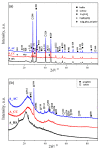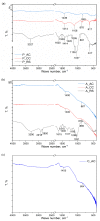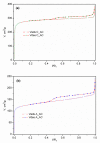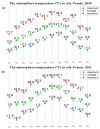Natural Cyanobacteria Removers Obtained from Bio-Waste Date-Palm Leaf Stalks and Black Alder Cone-Like Flowers
- PMID: 35682225
- PMCID: PMC9180351
- DOI: 10.3390/ijerph19116639
Natural Cyanobacteria Removers Obtained from Bio-Waste Date-Palm Leaf Stalks and Black Alder Cone-Like Flowers
Abstract
The impact of urbanization and modern agricultural practice has led to accelerated eutrophication of aquatic ecosystems, which has resulted in the massive development of cyanobacteria. Very often, in response to various environmental influences, cyanobacteria produce potentially carcinogenic cyanotoxins. Long-term human exposure to cyanotoxins, through drinking water as well as recreational water (i.e., rivers or lakes), can cause serious health consequences. In order to overcome this problem, this paper presents the synthesis of completely new activated carbons and their potential application in contaminated water treatment. The synthesis and characterization of new active carbon materials obtained from waste biomass, date-palm leaf stalks (P_AC) and black alder cone-like flowers (A_AC) of reliable physical and chemical characteristics were presented in this article. The commercial activated carbon (C_AC) was also examined for the purpose of comparisons with the obtained materials. The detailed characterization of materials was carried out by X-ray diffraction (XRD), Fourier-transform infrared spectroscopy (FTIR), low-temperature N2 physisorption, and Field emission scanning electron microscopy (FESEM). Preliminary analyzes of the adsorption capacities of all activated carbon materials were conducted on water samples from Aleksandrovac Lake (Southern part of Serbia), as a eutrophic lake, in order to remove Cyanobacteria from water. The results after 24 h showed removal efficiencies for P_AC, A_AC, and C_AC of 99.99%, 99.99% and 89.79%, respectively.
Keywords: activated carbon; adsorption capacity; black alder; cyanobacteria; date palm.
Conflict of interest statement
The authors declare no conflict of interest. The funders had no role in the design of the study; in the collection, analyses, or interpretation of data; in the writing of the manuscript; or in the decision to publish the results.
Figures















References
-
- Walker H.W. Harmful Algae Blooms in Drinking Water: Removal of Cyanobacterial Cells and Toxins. CRC Press; Boca Raton, FL, USA: 2014.
MeSH terms
Substances
LinkOut - more resources
Full Text Sources

